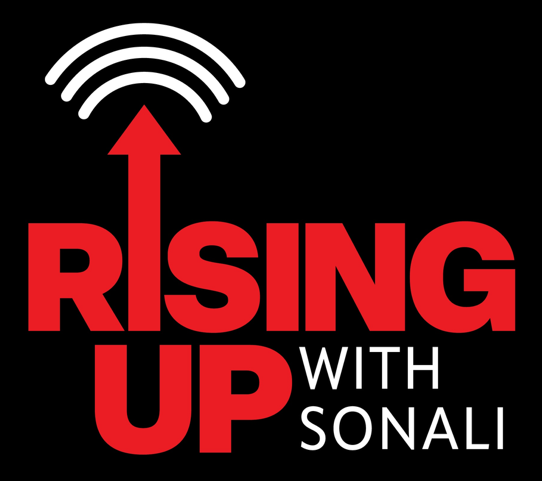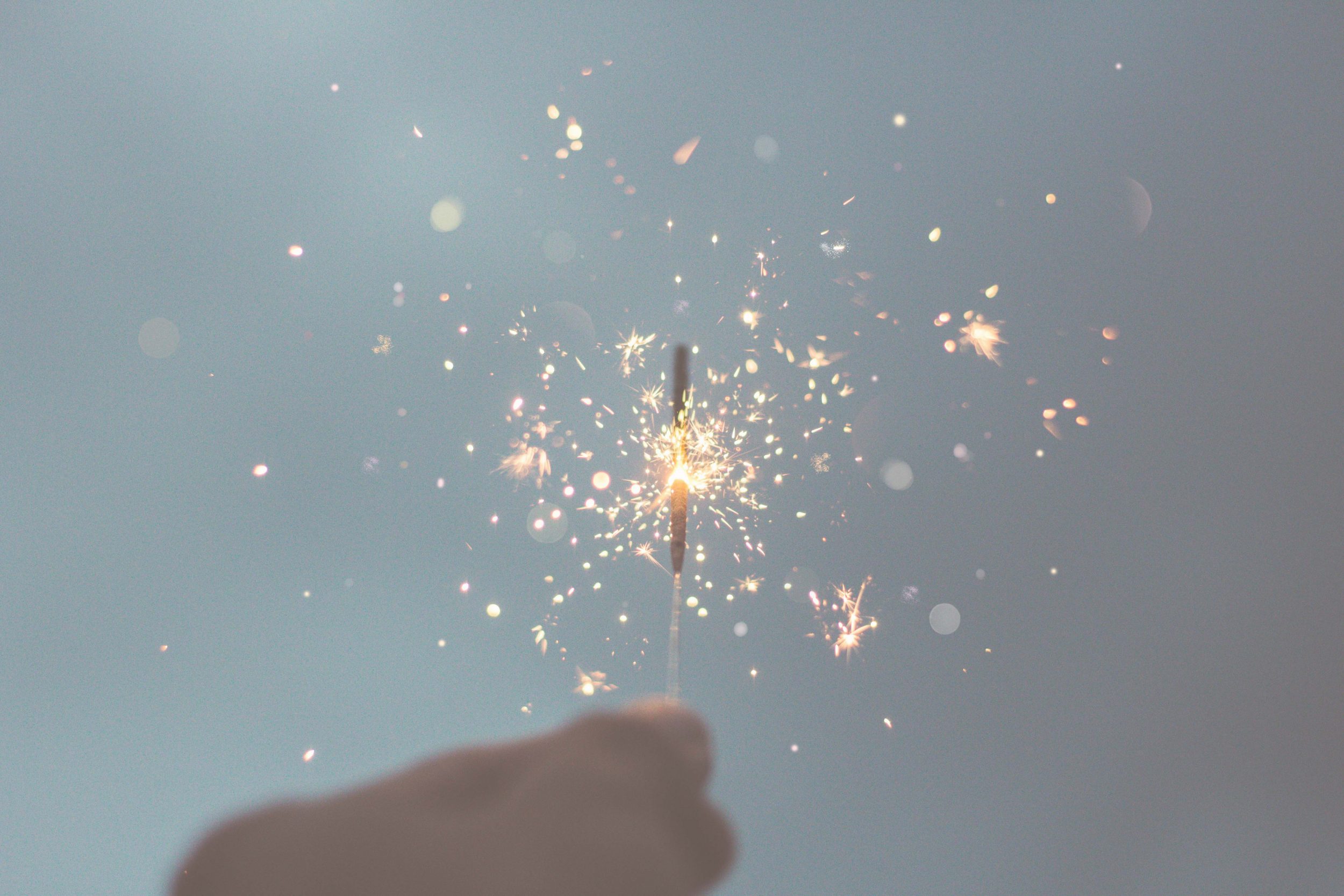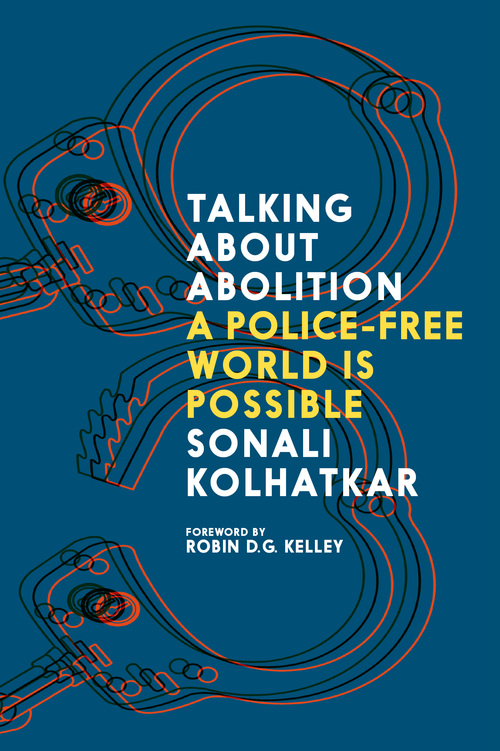Having an abolition mindset isn’t just relegated to the criminal legal system. It means reimagining society as a whole, especially in how we think about our responsibilities to one another while balancing our individual rights. This balance is one of many abolition-related ideas that Gina Dent thinks about.
Dent has spent years alongside the godmother of abolition, Angela Y. Davis, exploring how abolition ideals intersect with feminism and social justice movements. She codirects the Visualizing Abolition project at the University of California, Santa Cruz, where she is a Feminist Studies professor. The project challenges narratives that link prisons to justice and imagines new ways of thinking about a prison-free future. She has also published a conversation with Davis titled “Prison as a Border,” and is coauthor with Davis, Erica Meiners, and Beth Richie of the book Abolition. Feminism. Now. Dent has accumulated deep wisdom on how to put abolition ideals into practice.
—Sonali Kolhatkar

This interview is published in collaboration with Rising Up with Sonali.
Sonali Kolhatkar: Abolition entered the national dialogue during and after the uprisings of 2020. Was that year a game changer for policing and prisons, or have they maintained their status as “necessary” parts of society?
Gina Dent: I don’t know if I would say that moment was the game changer. I think what preceded that moment, that made us ready for that moment, was the game changer: decades of work toward abolition, specifically prison abolition. Those years of organizing are what allowed us to take advantage of that moment, be prepared for that moment, and know how to respond in that moment. The degree of sophistication that people had when they were asked about the viability of a society that operated without prisons and policing was really astonishing.
I think what transformed in that time period was a relationship to policing rather than only imprisonment. The movement that I had been involved with previously was much more focused on the hidden aspects of our carceral system and less focused on things that were already being handled by another wing of the movement around stop-and-frisk, or driving while Black, or the racial differences in the rates of arrest, the treatment after arrest, et cetera—all that kind of work that people have been doing for a very long time. What was really new at that moment was the way that abolition became an all-encompassing approach to addressing the carceral system.
We have continued to stay in that moment, though I know many municipalities are still struggling with new ways to organize society. We are not done with that.
SK: You have specifically written about abolition’s links to feminism alongside Angela Y. Davis. The two of you pointed out that feminism cannot be attached to incarceration, that feminism has to be anti-racist and anti-capitalist. How does feminism need to redefine itself in a post-abolition world?
GD: I guess I’d put it slightly differently. Davis, Erica Meiners, Beth Richie, and I have all been involved in the abolitionist movement in different ways for a long time. We really saw the need to address the problem of not thinking about abolition when doing feminist work, specifically against domestic violence and other forms of interpersonal violence.
That doesn’t mean we can wait until abolition to transform our feminism. It really means that our work needs to be both abolitionist and feminist. And so, we use the compound noun “abolition feminism” to underscore that idea. We strongly believe that separating abolition and feminism does violence to our movements.
It’s important to balance the need to address harm caused by the state and private harm caused on the interpersonal level. We need to develop a society that changes our relationships to each other and how we deal with both sources of harm. It’s not something that can be thought about in an additive way—abolition plus feminism—or even something that we could address ex post facto.
SK: There was a time when the term “restorative justice” was very trendy. Is that idea or term still relevant inasmuch as we can apply it to harm reduction and interpersonal violence?
GD: “Restorative justice” is a term that I sometimes hear used interchangeably with other terms within the abolitionist movement. I live in Oakland, California, home to an organization called Restorative Justice for Oakland Youth, whose work I have followed for a long time. Some part of that work would probably be considered abolitionist, and some part of that work might be in another arena. I’ve heard people use the term restorative justice in so many contexts.
Restorative justice has sometimes been tricky in the sense that it was built first on cultural practices that were white and not necessarily anti-racist—Quaker and Christian—and then later on practices extrapolated from Indigenous and African communities. I think those things might work well in communities where a cultural connection to those practices and ideas is strong, but I think it’s hard to move those same practices into every environment, especially without considering their origins and histories more carefully. I prefer to use the term “transformative justice,” and also to attend to transitional justice for frameworks that are more global, but I’m less concerned about the actual labels that people use when they’re doing this kind of work. I’m more concerned with evaluating how much the organizations are moving us toward or away from carcerality.
More from our decarceral brainstorm
Inquest, finalist for the 2025 National Magazine Award for General Excellence, brings you insights from the people working to create a world without mass incarceration.
Sign up for our newsletter to get the latest in your inbox every Saturday.
Newsletter
SK: I think a lot of people who identify with the tenets of abolition still feel like they need concrete examples of what that could look like when harm is done. If we don’t rely on policing, courts, and prisons, what do we rely on? I know that there’s much to be said in terms of how we reduce harms by funding the things that keep us safe to begin with. But of course, we can’t completely eradicate harm by fully funding all the things that we need. So, what might the nuts and bolts of a new system look like?
GD: Many people in the movement have argued that we already have a lot of the nuts and bolts. It’s not as if we’re going to build a completely new society at once. We’re trying to revitalize practices that are equitable, healing, and where our interpersonal relationships are not dependent on racial hierarchies, gender hierarchies, and certainly not on class hierarchies—which may be the most important one to draw out. Those ways of thinking deeply about social inequities and reaching for a way of embracing all people are fundamental to what it means to build toward abolition.
We already have some of those practices, and people are doing this work in local spaces, and that’s so exciting to see. Unfortunately, capitalist media invisibilize abolitionist stories that encourage us to imagine how we could live together differently. Thus, it’s important for those involved in these organizations and communities to keep telling the stories of what’s happening. I don’t know anyone in the abolitionist movement who is naive about harms or violence. In fact, most of us are survivors of some form of violence. Many people come to the movement because they’re so dissatisfied with what they find once they confront the criminal legal system. In Abolition. Feminism. Now., Davis, Meiners, Richie, and I focus especially on gender violence. We examine the ways that people are often disappointed when they have been harmed and then try and process what happened while being further harmed by our “justice” system.
As they’re being poked and prodded and asked to recount what happened, they are forced to see what has happened to them and what the perpetrator has done in individualistic rather than systemic terms. Those things feel very unsatisfying for people who are survivors of violence. As a result, we are driven to develop other ways to cope with that violence, to repair relationships and communities, and to build toward prevention through non-carceral frameworks.
We’re not saying that violence will immediately go away. I don’t think any of us are imagining a future free of harms. There might be different harms and patterns, and there will probably be people who are more vulnerable than others. As we study the past, we find that some supposed advancements—reforms—often result in unanticipated further harms. That’s why addressing gender violence carries important lessons for the whole abolitionist movement. Equal treatment models that measure the status of women and gender nonconforming people, for example, through the length of prison sentences of perpetrators or the criminalization of further behaviors have fueled incarceration rates in their usual pattern. And that pattern of incarceration doubles down on the inequities created through racial capitalism, so that in seeking to address some harm through a carceral grammar, we have created further harms.
It’s not to say there wouldn’t be consequences in response to harm. The question is, do those consequences actually help build a healthier society, or do those consequences invisibilize the problem and produce further violence? By that I mean the violence of incarceration and punishment that has no actual capacity to help people to rebuild their lives. Those ways of handling the problems continue to feed and reinforce, not diminish, the problem of violence.
Prison is not a place that solves violence. Prison is a place that replicates and even reorganizes that violence and extends it out into the communities around prisons—not only through those who are released (the most obvious assumption that furthers criminalization of some) but through the relationships that the prison–industrial complex organizes.
In addition to the harms that people describe when they use the term “violent crimes,” there’s also the violence of not being able to make a good life when a person has completed their sentence, the violence of continually being perceived as a felon or a criminal and denied things that a person without a record can enjoy.
Abolition feminists work at the practices of care that build on the forms of collectivity that are very fragile and discouraged in our societies, but that we nonetheless have. For example, many of us are reaching for practices that have been described through Indigenous communities. Not to romanticize them, not to decontextualize them from their histories and their own hierarchical practices, and not to extract them from the larger cultural fabric, but to continue to learn, think through, compare, and practice what it means to create a different relationship to land, to territory, to property, and to capital.
SK: How do we bring about a widespread shift where we start to embrace the idea of collective liberation, collective responsibility, and the restoration of people and society?
GD: It’s ongoing, but under the conditions of racial capitalism and neoliberalism, it’s challenging. This reminds me of the distinction between what have been described as responsibility-based cultures and rights-based cultures.
One of the most interesting sets of discussions that I tend to have, especially with young organizers, has to do with their sense of their right to things, such as the right to be free from harm. Sometimes this comes up even in organizational conversations and struggles. Instead, I am drawn to formations that try to reorient us toward the question of what our responsibilities to each other are.
One way of imagining what this might be like is the analogy to wearing a medical mask during a pandemic. What does it say about a culture where an individual’s right to be mask-free is prioritized over a collective responsibility to protect others during a pandemic? It’s not a perfect example, but I think the analogy allows us to see that we need to be much more responsibility-based in our way of understanding our lives. Conversations around self-care can be productively complicated when we discuss, for example, how much formerly incarcerated folks who work in the movement after their release tend to find deep meaning and connection. I’ve heard time and again about how much being able to do that work is connected to a feeling of greater wellness. These are small, but not inconsequential, adjustments to how we think of thriving.
Even in terms of activism, questions as to who is represented as a leader or who are the central organizers come up a lot. This was a strong focus in the phase before 2020. Black Lives Matter activists and other people were talking in a different way, sometimes through Black feminism, and sometimes for other reasons, about what it means to be leaderful rather than relying on charismatic leaders. Yet, we have continued to see how intractable this problem can be and how it has been a force in the attempted undoing of that very movement.
We need to move away from a culture that reinforces individualism, especially through its carceral logics. I teach legal studies and work on these issues, often with people in college and graduate school. I often describe what I refer to as the “love of the law”—the way that even those who are activists and involved in abolition imagine the legal system as the fix for itself.
I’m not saying that I don’t work with many lawyers, as well as legal scholars, who make necessary and incredible contributions that the movement could never do without. That’s not my point. In fact, those practitioners are often most aware of the limitations of our legal system. The point is that there is a kind of belief and faith in law—a desire to constantly create new laws or revise and reform other laws, and not to attend to the accretion of laws that build on and strengthen the same foundation. I think “breaking up with law” is important, which is part of the real threat of actual Critical Race Theory, a school of legal reasoning that contests the ahistoricism in U.S. jurisprudence.
Our “love of the law” is reinforced constantly, not primarily because of our experience with the actual legal system but because of how it, especially the criminal legal system, is consistently and constantly represented to us. Or rather, the way that the law is represented is our experience of it. Being able to represent it differently is important to the project of abolition— hence the deep work on language that has led to replacing the terms “prisoner” and “justice system” and the introduction of concepts such as the prison–industrial complex. The main project I’ve been engaged with for many years addresses issues of visuality, how the carceral system is naturalized for us, and how we are continually taught to rely on it as it’s the only thing we can imagine.
If you think about the fact that we have no moving visual cultural history without the presence of the prison inside of it—early film, so much of it focused on criminality and incarceration—we don’t have a way of even imagining how we could live without these structures. We need to pay attention to all of the ways in which that dependency is constructed and reinforced.
We have to do the cultural work of creating other ways of thinking about abolition. That can mean moving away from yet another focus on the conditions of imprisonment or from trying to convince people how horrible prisons are. I think most people have a sense of that already. But what they don’t know is how to get away from the system that we have, how to move toward something different, how to even imagine what that might look like, because we’re always making small adjustments in terms of what we think would create a more just system—reforms. We’re not actually thinking about reorganizing our relationships to one another and the harms that occur between us, but that’s what we need to do.
SK: Are you hopeful that a new, younger generation of Americans, particularly Black and brown youth, are taking the torch of abolition, learning from earlier generations, who learned from generations before them, to reimagine our entire society?
GD: Because of my work and organizing, I am with younger people a lot, and I’m very impressed with their commitments. Some of the commitments extend from their disappointments, and some of those disappointments are catastrophic. For example, look at climate change, where younger people know that it’s an emergency and know that we have to work together differently.
Sometimes that energy is still focused on the negative, on what we have to tear down. But the focus of abolition is to build, reinforce, and reclaim. That is the additional work that will allow us to really make a transition.
What does it mean to infuse all of our organizations, workspaces, play spaces, and educational spaces with abolitionist principles? It doesn’t just mean taking the police out of schools. Though that’s an important start—you can’t really imagine that you’re treating the problems between young people by suspending them or locking them up.
But we also need to imagine new ways of organizing schools. What are the topics that are going to be researched? What are the things that are going to be shared? What are the ways the classroom will be organized? Who are the teachers? Do we have a universal design in our curriculum that allows everyone to participate? What does relevance mean in a curriculum? There are so many ways that abolition requires us to rethink all of our different ways of interacting with each other.
I know that sounds very overwhelming, but it can also be quite simple and concrete. I happen to be speaking from a particular place right now at the University of California, Santa Cruz, where we have a project called Visualizing Abolition at the Institute of the Arts and Sciences. And it is a regular part of our practice to think about these issues in terms of staffing, in terms of how we organize events, in terms of why we offer food and who we share the food with during as well as when we finish an event, and all of the things that make a caring space beyond just making sure that the externally focused public events are feeding people’s questions, and intellectually giving people something to think about and to imagine. It is possible for us to be doing that work every day in every place we are. Abolitionist work is not only happening in abolitionist organizations. Those are important and we want to sustain them, and if there’s one close to you, join it, or you could try to create one. But, also, it’s important for us to be doing this work everywhere we are.
Excerpted from Talking About Abolition: A Police-Free World Is Possible by Sonali Kolhatkar, reprinted with permission from Seven Stories Press.
Image: Cristian Escobar / Unsplash



